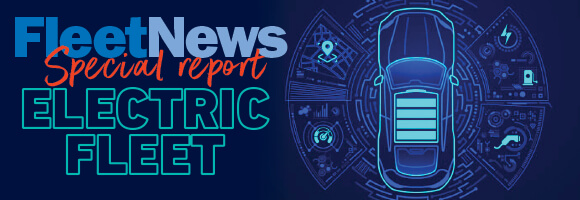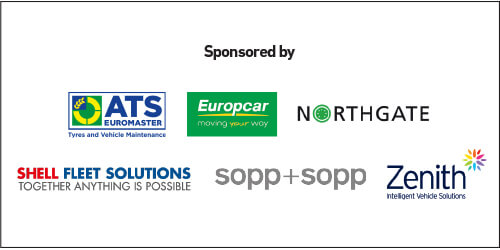This feature was taken from our latest Electric Fleet report.

One of the biggest hurdles facing businesses wanting to install workplace electric vehicle (EV) charging points has been the eye-watering costs they faced when their site doesn’t have enough electricity capacity and they therefore need to pay for a substation upgrade.
Thanks to new rules from regulator Ofgem, which took effect in April 2023, the situation has changed, with the upgrade costs largely being paid for by the Distribution Network Operators (DNOs) instead.
Under the rules, called Access and Forward-Looking Charges Significant Code Review (Access SCR for short), so-called ‘demand’ customers (those who take electricity from the grid for their own consumption) no longer have to pay for an upgrade.
‘Generation’ customers (those who generate their own electricity, through wind farms or solar panels, for example, and put some of that electricity back into the grid) now only pay a proportion of the cost to upgrade, apportioned by their voltage level at their point of connection.
All customers still pay for the works to provide their new connection (extension assets). The changes mean EV infrastructure costs have drastically reduced for many businesses.
“Previously, even if you were only putting two chargers in, if it took the whole estate above the capacity limit then you needed to pay for the upgrade,” explains Lorna McAtear, head of fleet at National Grid.
“Now fleet managers don’t need to be so concerned about the cost of tipping over capacity.”
A board member of the Association of Fleet Professionals (AFP), welcomed the changes saying: “In the past, the costs could be prohibitive – we heard horror stories from AFP members who were being quoted anything from £450,000 to £1 million for an upgrade.
“Access SCR has made it much easier and cheaper for businesses to transition more of their vehicles to electric.”
Scottish and Southern Electricity Networks (SSEN) says it has received “positive feedback” from customers and stakeholders on the impact of Access SCR so far.
“For a large proportion of connection requests, DNOs are now fully funding reinforcements associated with demand applications which require an upgrade to supplies, including those required for fleet charging installations, which has reduced project costs drastically for many customers,” says a spokesperson.
One of Scotland’s largest fleets in the utility sector, which has a site in Inverness requiring a new substation to allow it to install a multi-rapid charging hub for its commercial vehicles, has benefited from the new rules.
The total project costs are £640,000 but with the DNO now responsible for reinforcement costs, the cost to the fleet is now around £130,000.
“This means the project has gone from not being financially viable, to one which we can realistically consider,” says a member of the fleet team.
“While we don’t expect grid reinforcement at many of our sites, the new rules should make a huge difference for many fleets and will allow previously unviable projects to be more feasible to undertake.”
Ian Cameron, director of customer service and innovation at UK Power Networks, says: “Access SCR is good news for fleets and it sets in stone many of the products and services we’ve been developing over the past five years.
“We’re committed to making it cheaper, easier and faster for fleets to connect their charging systems to our network, and we’re working closely with the likes of the BVRLA and Logistics UK to support their members.”
He adds: “We’ve developed a free depot planning tool with Royal Mail, through our Optimise Prime innovation programme, the world’s largest EV fleet trial which concluded this year.
“All fleets are able to make use of this innovative tool.
“We have also developed a range of new connections products such as timed connections when you have access to more capacity at certain periods of the day, and profiled connections which develop a bespoke offer based on the times you use electricity.
“Our immediate focus is on enabling fleets to connect as quickly and cheaply to the network as possible while ensuring the capacity we all need is there in the long-term.”
Planning for future requirements
Businesses planning to install EV charge points should speak to their DNO “at the earliest opportunity”, according to McAtear.
“You need to work with your energy company to understand how much capacity you have at your site,” she says.
“If you already have enough within your authorised supply capacity limit and you don’t need the upgrades then Access SCR doesn’t apply to you.”
Businesses that have reduced their capacity in the past to cut costs should be aware that they can’t simply get that capacity back.
“New housing developments or shops may have been built and that capacity may have gone to them,” McAtear explains.
She advises fleet managers to plan for future EV charging requirements and to use a ‘phased’ approach (known as phased capacity management) whereby they apply for the electricity capacity they may need to convert their entire fleet to electric even if it will be several years before the whole fleet has transitioned, and ‘draw down’ their capacity as and when they need it.
Kester Jones, connections strategy manager – electricity systems at National Grid, says: “We will lay the extension assets now even if you’re not using that capacity at this moment.
“The advantage is that we lay the cabling and extension assets just once as opposed to a piecemeal approach where you tell us you want ‘X’ amount of demand now, we lay some cables, you want a bit more demand in a couple of years’ time and those cables still have some capacity, then a couple of years later they are full and we need to put bigger cables in.”
Jones says it is a way to “future-proof” capacity, although it is subject to an annual review.
Volumes of applications and connections to grow rapidly
The planned 2030 ban on the sale of new petrol and diesel vehicles was anticipated to create more than one million domestic EV charger applications per year.
The Government heat pump target added a further 600,000 a year, but it is not known what effect its decision to postpone both deadlines to 2035 will have yet.
As National Grid Electricity Distribution owns four licence areas out of 14 in the UK (roughly a third) it expects to have 500,000 low carbon connections to the network, the equivalent of 2,000 for each working day.
This is up from 41,000 EV and heat pump applications in 2022 (164 working days).
To manage that National Grid has created a centralised team and is digitalising its applications and connections process.
EV applications can now be made online and businesses can use a budget estimate tool and access data on the capacity that is available on the network.
National Grid’s planning teams also offer connection surgeries so businesses can discuss their requirements before making an application.
Similarly, SSEN offers regular connection surgeries, workshops and webinars. It also has a business relationship management team, which offers dedicated support for each market segment.
Smaller EV charger requests can be completed online and confirmed “in minutes” with UK Power Networks and it is transitioning to an improved online portal for all other connection applications.
Fleet customers can also access a range of pre-application support services, including a self-service Open Data Portal, ‘Ask the Expert’ email services and face-to-face or online surgeries where they can discuss their project in detail with an engineer.
A fleet manager who has been through the process advises other businesses to become familiar with their specific DNO’s online system for a new connection.
“They all differ, but are becoming better in terms of the user experience,” he says.
“If a new application is submitted then you may often be given confirmation of who is dealing with your case.
“My experience is that talking to the individuals yields a lot better results than engaging over email.
“Also be aware that your installer (regardless of using a new or existing connection) should be informing the DNO of any EV charger installation, to help the grid keep informed of forthcoming additional loads.”

Our latest Electric Fleet special report will help organisations take the next step to fully decarbonise their fleets, including:
- How to secure workplace charging uptime
- Importance of looking after charging cables
- Increase EV sustainability with a battery energy storage system
- Learnings from a wireless charging trial
- Electric vehicles coming soon






















Login to comment
Comments
No comments have been made yet.